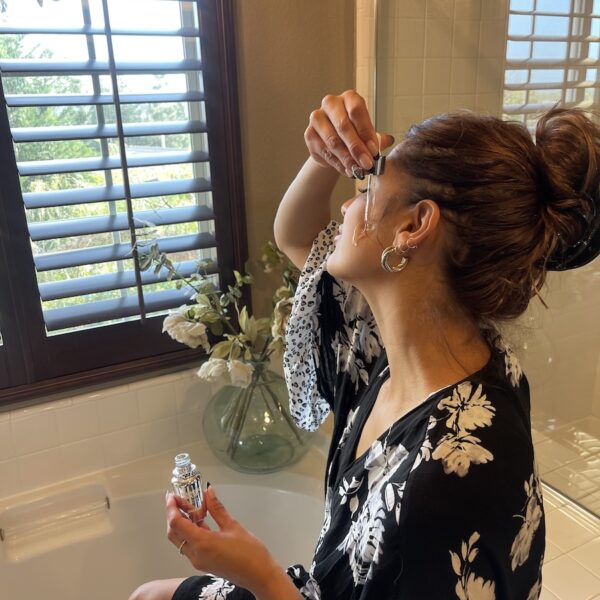Hello again, dear friend Anonymous. Welcome back to our sex talk column where readers submit questions, then we do our research and craft a story to answer as many questions as we can. We tapped Dr. Kate Balestrieri—licensed psychologist, certified sex and PACT couples therapist, and founder of Modern Intimacy in Los Angeles, California—to provide her (s)expert knowledge on steamy topics (like how to teach yourself to squirt, everything you need to know about edging and rocking, if nipple orgasms are real, ways to increase your libido, sex stage fright, enjoying outercourse, and more). Today she’s taking the mic in our Ask Us Anything: The Sex Edition, to answer the latest submission. The topic? Compromising in the bedroom.
“In every relationship, there is a balance constantly in play. The delicate dance of recognizing, acknowledging, and meeting each other’s needs reciprocally can frustrate even the happiest couple, because every couple consists of two unique people, whose wants and needs change.
Not only can each of your needs change moment to moment, but they can often be in direct competition! You may want to cuddle after sex, and your partner may be too warm and want space. Neither of you is wrong, but effective compromise is key to making sure you both get enough of what you need from each other, so resentments are kept at bay.
The same is true during sex. People have all kinds of different desires, fantasies, needs, fears, and limits in the bedroom. Healthy dialogue and collaborative negotiation can help you keep things hot and mutual, especially if you have a discrepancy in your desire or sexual interests.
Once you recognize that there is an imbalance of give and take, or you’re looking to change things up, take care to set up the conversation for success. There are no guarantees for how a partner will respond because sex can be a loaded topic, but there are a few considerations that can help it go smoothly.
Pick the Best Time
Consider the demands of your lives and when you both are likely to be best equipped to have what could be a dimensional conversation. For example, it’s not generally advisable to start unpacking a layered topic during sex, as passions may be high, and emotions may be higher. If you know your partner is a morning person and does not like to have big conversations before bed, plan accordingly. Give yourselves the best foundation to be able to have a meaningful dialogue, when you are rested, fed, and ready to talk.
Use Constructive and Reassuring Language
You may feel frustrated if you’ve been feeling lopsided efforts in the bedroom, but having an empathic and non-shaming approach to asking for what you need can help take the sting out of letting your partner know you need something different or more. Emphasize what you like, or love, about your sex life, and how you’d like to experience more of that and/or try something new together. Instead of saying, “You don’t ___ enough,” say, “I love when you ___ and want more of that!”
Be Clear on What You’re Asking For
Are you asking for more frequent sex? Different kinds of sexual play? New sex toys? More eye contact? To include porn? Whatever it is that you imagine will require compromise, get curious about what your desire means to you, and what it means to your partner. If you’re not sure what you want, you just know that you’d like something to change, you might consider using a Yes/No/Maybe list to get clarification on your sexual wants and boundaries together.
Gauge Their Needs and Fears
Equally as important as asking for what you want is holding space for your partner to do the same. Let them know you are eager to learn more about how you can please them better too. If your partner is hesitant to try something new, or meet you halfway, in a nonjudgmental way, get curious with them about what holds them back. Are they scared, shy, feel insecure, or afraid it may change the relationship? Validate their concerns and try to see if there is willingness to move forward if their concerns are assuaged.
Start Slowly
If one or both of you is nervous to try something new, find a way to inch closer to that activity by incrementally introducing more bite-sized activities. For example, if your partner wants to try BDSM, but you’re not sure you are interested, perhaps try being sexual the way you are typically, but introduce a collar or use a prop to softly caress each other’s skin, instead of inviting pain or dominance behavior. Starting small, and in a way designed to build a positive association to every behavior, can make the out-of-reach activity seem more feasible.
Engage in Aftercare
A good practice after any sexual experience is aftercare. During aftercare, partners nurture each other, hold space for big emotions, cuddle, eat, rest and/or debrief about the encounter. The practice of aftercare is generally thought of as a transition from a sexual experience back to a non-sexual way of relating with each other and is a good time to process what you both liked, did not like, or need in future sexual moments together. Making this a regular part of your sexual routine can help take the pressure off big conversations, as you begin to get used to giving each other nurturing and collaborative feedback.
All these steps assume you have a partner willing to meet you in the middle. If your partner has made it clear that they are not interested in a compromise, respect their limits and boundaries. Working with a sex or couples therapist can help you unearth any underlying dynamics that may make it difficult for your partner to imagine taking sexual risks or putting forth more effort. Working together to address resentments, fears, or alternative options for sexual compromise can bring you closer together and help you move from stuck to solution.”
Dr. Kate Balestrieri is a licensed psychologist, certified sex therapist, certified sex addiction therapist, PACT therapist, and founder of Modern Intimacy, a group practice in Los Angeles, Miami, and Chicago. Listen to her podcast, Modern Intimacy, and follow her on IG @drkatebalestrieri.
The content provided in this article is provided for information purposes only and is not a substitute for professional advice and consultation, including professional medical advice and consultation; it is provided with the understanding that Poosh, LLC (“Poosh”) is not engaged in the provision or rendering of medical advice or services. The opinions and content included in the article are the views of the interviewee only, and Poosh does not endorse or recommend any such content or information, or any product or service mentioned in the article. You understand and agree that Poosh shall not be liable for any claim, loss, or damage arising out of the use of, or reliance upon any content or information in the article.







































